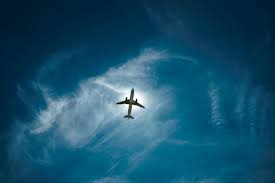Recently, Qantas launched a direct flight between the United Kingdom and Australia by linking up London and Perth (on the west coast of Australia). It brings one of the biggest goals in aviation of linking up London and Sydney (on the east coast of Australia) directly. The route has come a long way since as late as the early 1980’s, when the journey between the two continents could involve four or more flight segments that stopped in various locations along the way in Asia.
One of the concerns with launching the London to Perth flight was that passengers would have to spend roughly 17 hours in the air to get there. However, the route is popular and makes the ultimate deal of linking London and Sydney more realistic in the process. But what about flying between other cities of the world? How long would that take?
Flight times can vary quite a bit, even on the same segment of flight between the same cities because of variables such as headwinds and weather. I decided to examine and visualize this data in Tableau using their amazing mapping features. I estimated that a plane would travel 500 miles per hour in the air to determine the travel time in hours between the two cities. At the top of the dashboard, there is a slider that can be adjusted by physically moving the slider or typing in a lower range number of hours in the box at the left side of the slider or a higher range number of hours in the box at the right side of the slider. It is also possible to make these values equal to one another if looking for say a list of 9 hours flights.
The flight routes in the map in the Tableau link above will adjust to account for the selected flight time and by hovering over the blue line that represents the route, users can see the details about the route, such as the estimated flight time, and the actual distance (in miles) between the two cities. By hovering over the blue line between London and Sydney, this has an estimated travel time of 22 hours between the two cities. A long time to spend on a plane, but as it turns out, passengers much prefer to take a longer non-stop flight then have layovers between the two cities. The actual flight time will likely be less than that, but the estimated time erred on the higher end for the sakes of accounting for slower treks because of variables like headwinds.
Looking at the rest of the flight times between cities, some of them have incredibly long durations! Take the potential routes between Asia and South America – these are roughly an entire day on the same plane. However, given the fast growing travel market in Asia and the interest in many Asians to go farther abroad, flying between the far reaches of Asia and South America make become both physically possible by the plane and economically viable for the airlines. Only time can tell…
Data source: https://www.infoplease.com/world/transportation/air-distances-between-world-cities-statute-miles
-HW
